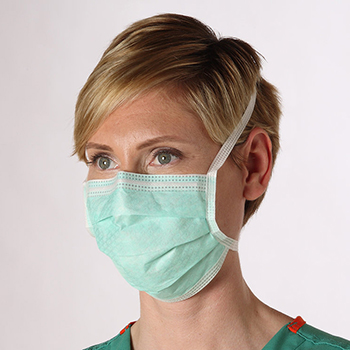
Workers in laboratories and animal areas are at risk of developing animal allergens due to contact with animals, animal bedding, excretion, and secretions. Most species of animals used in research have been identified as the source of allergic symptoms.
The best approach for reducing the likelihood that a worker will develop an allergic reaction is to eliminate or minimize their exposure to the proteins found in animal urine, saliva, and dander; thus, limiting the chances that workers will inhale or have skin contact with animal proteins.
In addition to using well-designed air handling and waste management systems in research areas, workers can reduce their risk of exposure by routinely following Personal Protective Equipment (PPE) requirements, washing hands frequently, and decreasing time with animals.
While respiratory protection is not required in most situations, the use of a disposable respirator mask is recommended if potential exposure to animal allergens is a concern. Surgical masks are designed to protect animals and surgical sites from contamination. They protect the nose and mouth from accidental contact by hands that may be contaminated with allergens, but do not offer the same level of respiratory protection as a N-95 respirator.
The N-95 respirator meets the National Institute of Occupational Safety and Health (NIOSH) standards for respiratory protection and is certified to prevent inhalation of small airborne contaminants and allergens (i.e., 95% of the particles that are capable of transporting animal allergens). Thus, properly fitted, N-95 disposable respirators equipped with high efficiency particulate filters provide better protection from allergens than surgical masks.
Understanding Different Mask Types

Surgical Mask
- Does not provide effective protection against animal allergens
- Does not seal the face or provide an adequate filter for small contaminates
- Protects from large droplets or splashes, sprays, or splatters

N-95 Respirator
- Provides effective respiratory protection against animal allergens
- Seals the face and provides a filter for protection
- Protects from large droplets or splashes, sprays, or splatters
Where to Learn More
Download this handout on Animal Allergies and Respiratory Protection to print and share with your laboratory staff.
Please contact Environment, Health & Safety (EHS) at (734) 647-1143 for information on obtaining an N-95 respirator, or for questions related to the appropriate respiratory protection needed for animal allergy concerns.